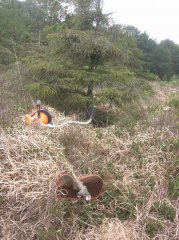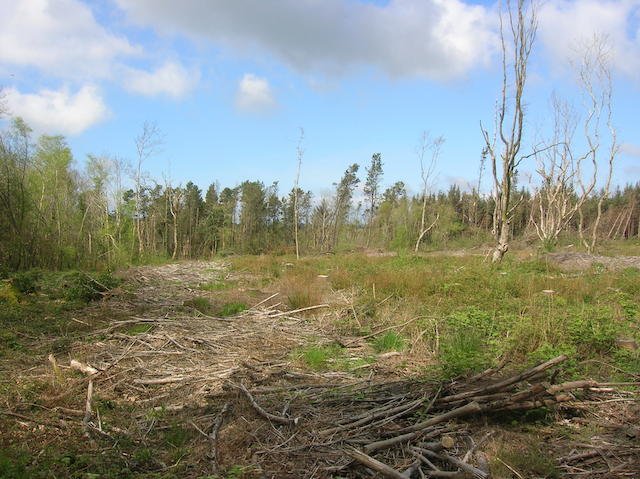 With winter finally retreating into history and warmer days once more with us, many people will be noting their favourite signs of the coming of Spring and Summer. For some it will be the sight of bluebells in the woods or the arrival of swallows and other summer migrants. One of my favourites comes late in the Spring, leaves early, but is the very essence of heathland in high summer – namely the Nightjar.
With winter finally retreating into history and warmer days once more with us, many people will be noting their favourite signs of the coming of Spring and Summer. For some it will be the sight of bluebells in the woods or the arrival of swallows and other summer migrants. One of my favourites comes late in the Spring, leaves early, but is the very essence of heathland in high summer – namely the Nightjar.
European Nightjar, Norfolk, Copyright: © Natural England/Allan Drewitt. Aug. 2007
With winter finally retreating into history and warmer days once more with us, many people will be noting their favourite signs of the coming of Spring and Summer. For some it will be the sight of bluebells in the woods or the arrival of swallows and other summer migrants. One of my favourites comes late in the Spring, leaves early, but is the very essence of heathland in high summer – namely the Nightjar (Caprimulgus europaeus).

European Nightjar, Norfolk, Copyright: © Natural England/Allan Drewitt. Aug. 2007
 As the days lengthen this seldom seen and mysterious bird leaves its daytime hiding place at dusk to silently take to the air on long, soft-feathered wings. Twisting and turning through the twilight, it follows flying insects and traps them in its gaping bill. The nightjar is a creature one will much more likely hear than see. In flight it often makes a sound like a whip-crack with its wings; perched, the male gives issue to its very distinctive 'churring' song. Rising and falling in pitch, it has, perhaps unkindly, been likened to the sound of a malfunctioning moped receding into the distance. However, once heard in the gathering darkness of a warm summer evening, it is an unforgettable experience. It is not surprising that such a creature has gathered more than its share of myth and superstition. Its old country name of 'the goatsucker' was credited to the false belief that it milked goats with its huge mouth whenever it flew into pasture where livestock were to be found.
A creature of heath, scrubby commons and scattered plantation woodland, this summer visitor was once widely, though thinly, distributed across the British Isles. For much of the last century it has been a story of gradual decline, with numbers falling across the land as its favoured habitats have been lost. However, in recent years this decline has halted and a real recovery in numbers seems to be taking place. One of the factors driving this recovery here on the Lizard, as well as other parts of the country, appears to be the clear felling and opening up of plantation woodland. The removal of blocks of 40-60 year old conifers brings light and warmth to the woodland floor and once more creates conditions favourable to the nesting requirements of the nightjar.
As the days lengthen this seldom seen and mysterious bird leaves its daytime hiding place at dusk to silently take to the air on long, soft-feathered wings. Twisting and turning through the twilight, it follows flying insects and traps them in its gaping bill. The nightjar is a creature one will much more likely hear than see. In flight it often makes a sound like a whip-crack with its wings; perched, the male gives issue to its very distinctive 'churring' song. Rising and falling in pitch, it has, perhaps unkindly, been likened to the sound of a malfunctioning moped receding into the distance. However, once heard in the gathering darkness of a warm summer evening, it is an unforgettable experience. It is not surprising that such a creature has gathered more than its share of myth and superstition. Its old country name of 'the goatsucker' was credited to the false belief that it milked goats with its huge mouth whenever it flew into pasture where livestock were to be found.
A creature of heath, scrubby commons and scattered plantation woodland, this summer visitor was once widely, though thinly, distributed across the British Isles. For much of the last century it has been a story of gradual decline, with numbers falling across the land as its favoured habitats have been lost. However, in recent years this decline has halted and a real recovery in numbers seems to be taking place. One of the factors driving this recovery here on the Lizard, as well as other parts of the country, appears to be the clear felling and opening up of plantation woodland. The removal of blocks of 40-60 year old conifers brings light and warmth to the woodland floor and once more creates conditions favourable to the nesting requirements of the nightjar.

In their own small way the staff of the Lizard National Nature Reserve have been contributing to this trend in those conifer woodlands in which they have an input. Each Spring the vegetation beneath selected trees is trimmed back to bare earth using a brush-cutter to create a nesting scrape. This scrape should ideally be in the shade of the tree during the longest part of the day and where possible 'dressed' with bits of bark and dead wood. I am led to believe that nightjars are happiest nesting amid things that most readily resemble themselves – such is the nature of its camouflage. If selected, this scrape will provide a refuge for the nightjar to lay its eggs, raise its young and lie motionless during the day, before once more taking to the wing to feed with the setting of the sun.

Published: May 2014
Author: Duncan Lyne (Reserve Warden, The Lizard National Nature Reserve, Natural England)
Click here for information about other bird species found on the Lizard.
